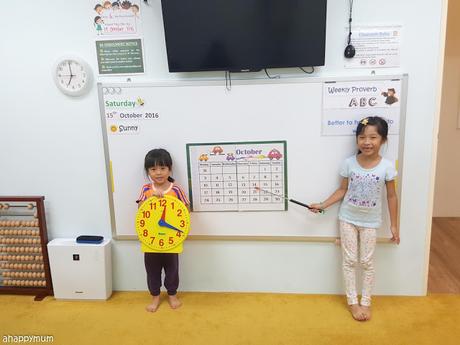
It's been a year since we began our journey with Heguru and the girls love coming here more than ever
In my previous post, (yes, the long and detailed one that tells you all about right brain training and shows you the contents of a typical Heguru lesson), I talked about
- the difference between the left and right brains
- an introduction to right brain education and how it works
- the need to start from young
- program overview at Heguru Education Centre
- activity highlights in 12 broad categories
- our thoughts and feedback
In this post, I will be sharing more in depth about how the girls have progressed so far and how we find the classes. I also wish to shed more light on the Primary Schooler Course because unlike the other courses which focus primarily on right brain training, this course seeks to bring out the best of both the left and right brains by strengthening, bridging and harnessing their abilities.
******
Primary Schooler Course
I vividly remember that Angel was not initially keen when I mentioned that she would be going for right brain training classes, which I think could be accounted to the fact that she knew she had to be there solo while I could accompany her sister for the toddler class. Thankfully, that changed after just one or two classes because she took to Teacher Shi Xian and developed a liking for all the fast-paced activities.
Halfway through the journey, she told me that one of her primary school classmates, who happened to be attending Heguru classes too, had decided to drop out for fear of it affecting schoolwork. It made me ponder, is this all getting too stressful for my kid? I mean, having to complete over 60 activities in one lesson isn't really a walk in the park. Does she really need to complete the revision? Well, on days when we really can't complete all the worksheets, the teachers are understanding and lenient about it too. This works hand in hand with mainstream education, doesn't it? As much as it can be hard to track actual progress, I like to think that instead of taking time away from her school work, this is supposed to help enhance her learning capabilities, let her perform better and be able to soar to greater heights.
But my one big question was: Is she happy? After all, this is the child who chose to stop learning the piano or go for swimming classes after trying them out for a few months. To continue or to stop, her choice will be my choice. So, when she voiced out that she likes going for Heguru classes and even enjoys it despite having to subject herself to trying to solve complicated puzzles, memorise strings of numbers, read faster than you can turn the pages, analyze problems that even adults might not be able to solve - and do all of this within minutes, sometimes even seconds - I was surprised but relieved.
You can say I wish for her to find joy in everything she does and I'm glad this journey with Heguru has turned out to be an enjoyable and fulfilling one for her. Here's showing you some of the activities she does in her Primary Schooler course that helps to stimulate right brain training and learning as a whole.
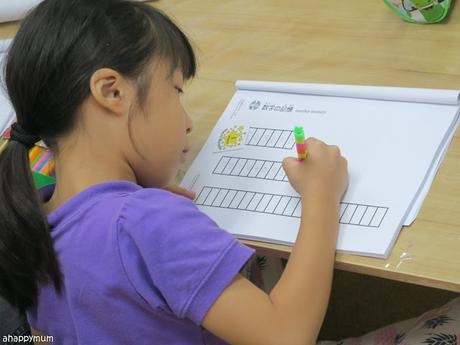
Number memory requires the child needs to memorise a 7-digit sequence in 7 seconds, 10-digit in 10 seconds and 20-digits in 20 seconds. This is very challenging, even for adults, just try it!
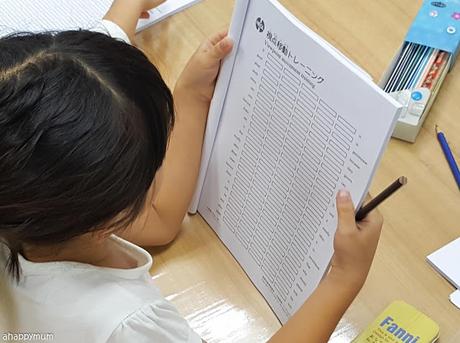
Reading techniques are taught so that the child learns to focus his/her line of sight, read and absorb swiftly. This is the viewpoint movement training where she has to read words located on the left and right side of the page to form a story

1-minute reading activities requires them to read passages in a minute and then write down as much as they can to help improve their memory and reading speed

Speed listening is a good way to learn to take in more while using less time. Kids are also exposed to general knowledge at the same time
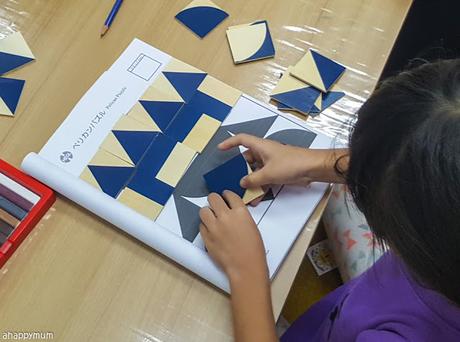
Puzzles form a huge part of the lesson content and they help improve logic and thinking skills, analytical process, problem solving and dexterity. The one shown above is the Pelican puzzle where you have to find the correct square pieces to match the picture
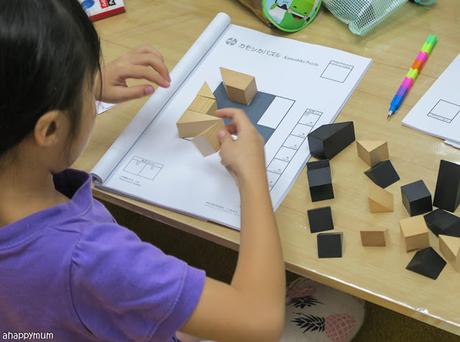
Kamoshika puzzle consists of light/dark 3-dimenisional shapes which you can rotate or flip to fit the whole picture
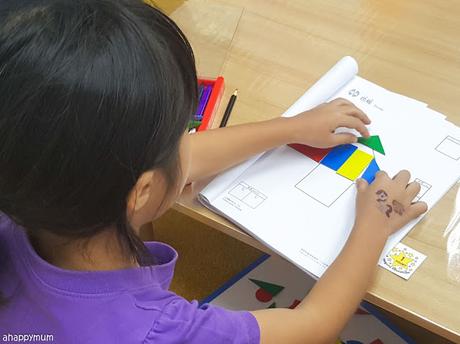
For Iroita puzzle, you have to pick out magnetic pieces of assorted sizes, shapes and colours to form the given figure
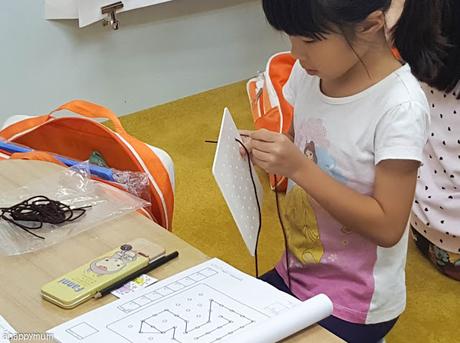
The Himo Toshi, or string puzzle, is unique to the Primary Schooler course and it helps to train hand-eye coordination, fine motor skills, processing and analytical skills
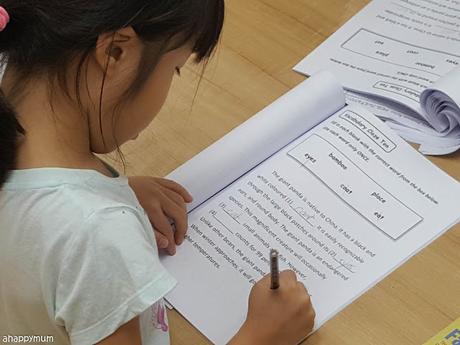
To incorporate MOE curriculum and also enhance the left brain capabilities, students are tasked to complete activities such as cloze passages, which have to be done in a very short time
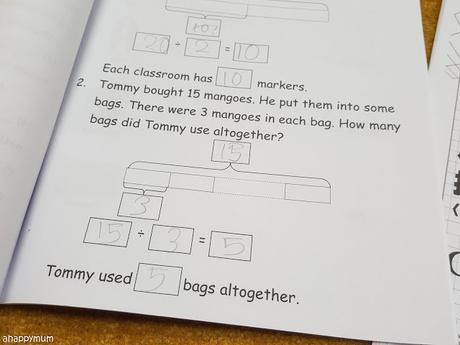
The students are also exposed to mathematics activities and models are used to help them solve the problems. This year, she has been introduced to the concept of fractions which she has not learnt in school yet
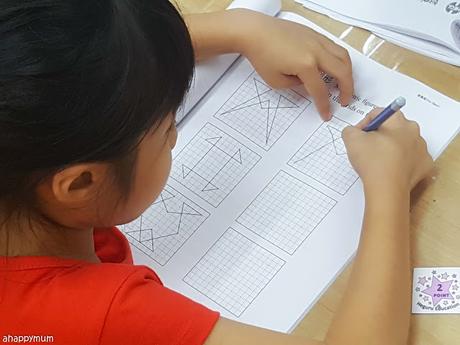
Drawing symmetrical figures helps to work on their understanding of spatial relationships and teaches them to be detailed and rigorous
******
As for the little sister, I have to say I'm really proud of how far she has come. Unlike her previous class, The Preschooler I course is not parent accompanied and since Day 1, she has been adjusting to the pace, settling herself down with ease and getting used to the notion of having to handle everything on her own.
From that shy, reserved girl who first arrived in Heguru a year ago, she is now that vivacious, enthusiastic child who looks forward to every of her class with zest and anticipation. This energy of hers, it's contagious and it makes me happy knowing that she is happy. While the gist of the activity highlights remain the same as what I've outlined previously, here's a quick look at what she's been doing in the last few months of her right brain training journey.

She learns about numerals and is exposed to basic arithmetics such as addition and subtraction. Yes, she uses her fingers to count and does it slowly for now but she has definitely shown marked improvement
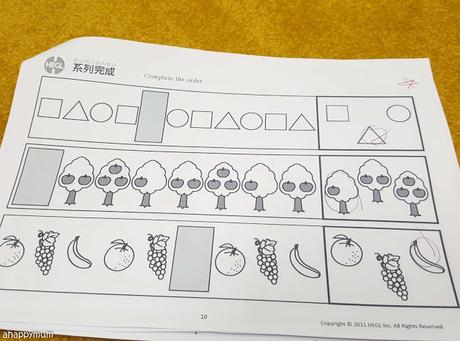
Patterns help to hone her analytical and problem solving skills, plus they're so fun to do! Ariel glides through these pattern related questions and seldom gets any of them wrong
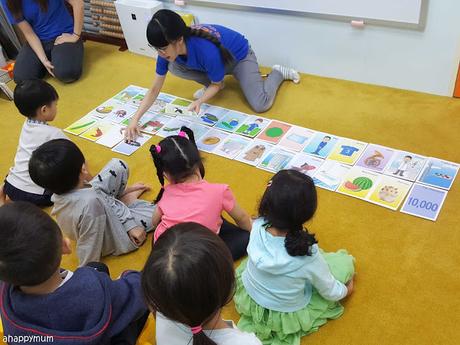
Linking memory is her of our favorite activities, where the teacher and students make up a story together using the keywords. I was amazed at the number of words these kids could remember!

Image training takes place when the teacher acts out a story under dim lighting, aiding the child with his/her visualisation skills and allowing their imagination to flow. She gets really engrossed with this one and loves the creativity
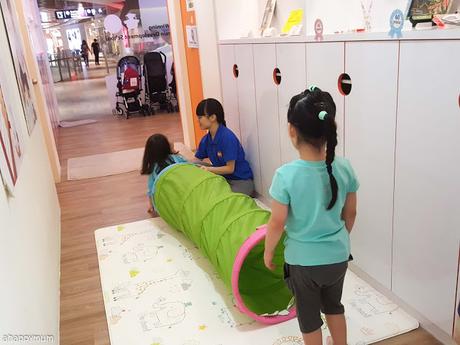
Having fun during the 'break' before they start on the writing activites. The kids usually perform a simple physical activity such as crawling through the tunnel, balancing a bean bag, hitting a golf ball etc. It allows them to stretch themselves before they re-focus their attention back on the lesson
******
I have to admit, it can be a little hard trying to determine or quantify just how far the girls have progressed after a year of Heguru classes. After all, Ariel does go for 3.5hrs of preschool and Angel attends primary school so they do pick up knowledge and skills in their schools too. Also, we do a bit of homelearning here and there, and we keep up habits such as bedtime reading every night so as to teach these kids as best as we can in our capacity as parents. However, these are what I've observed about them recently and if you were to compare to a year ago, I dare say they have both made a marked improvement, especially in the below areas.
1) Attention span
It's very easy for young kids to have short attention spans. At Heguru, the class is conducted in a loud voice by the teacher and the activities are extremely fast paced, which in turns gives the child little opportunity to daydream and instead, he/she learns to concentrate on every task at hand. I remember seeing how Teacher Jocelyn asked the students in the Preschooler I class to remain quiet and not talk or move for one whole minute. Yes, one minute sounds short but you and I both know how hard it can be for a bubbly, active child to stay still even if for a minute. I was very surprised that while most of her peers had a tendency to fidget, Ariel was able to stay focused the whole time. As for the big sister, getting easily distracted as always been a problem for us and even though it still is, she has improved a lot and is now able to focus more on her task, especially when it comes to doing her homework or revising her spelling.
2) Memory
This is something that has amazed me and still does, in many ways. I was very surprised to realize that both of them have better memory abilities as compared to a year ago. Okay, it's not that they had poor memories to begin with (they are girls after all and I like to think they take after me in the memory aspect) but I have to say that it was evident they improved by leaps and bounds in the past year. How do I know that? Firstly, both of them can memorise the contact numbers of everyone in the household, including the grandparents. Secondly, they are able to remember most of the lyrics of a song after singing it for a few times. Thirdly, they can remember the spelling of new words. While Ariel has just learnt simple words like 'dog' and 'cow' and 'love', she is able to spell a handful of them. As for Angel, she has done amazingly well and gotten full marks in all her spelling tests in Primary One which says a lot, I think. I am particularly impressed by how they can remember details in our everyday life, such as where did we buy a toy from, how much did an item cost, what food did we have for dinner two days ago, where did we go last weekend and so on, which are things that I don't even remember on most days.

Ariel has made good progress in the number memory activity and on one occasion, she even obtained a perfect score which surprised me and the teachers too
3) Problem solving
I get frustrated when the kids answer me with a "I don't know" when presented with a problem. It's like more often than not, they don't even bother to try or they make a half-hearted effort in trying to reach the answer. Having to solve numerous puzzles, questions and problem sums in Heguru gives them a chance to be more independent, more analytical, more creative and very importantly, more determined when it comes to problem solving. They experience a sense of satisfaction and accomplishment which spurs them on to try again next time round. For instance, in her last class, Angel came out and told me "Mummy, today I got all my puzzles correct and I scored 12 points!" in that ecstatic tone that makes you feel her joy from within. Yes, they have a point system in place and if you manage to complete an activity within the given time limit (mind you, it is very challenging!), you get a point. You can accumulate your points and in turn use them to exchange for rewards such as notebooks and toys. It's really not about the tangibles; it's about empowering them to be more daring and not give up easily whenever they have to overcome an obstacle. They still have a long way to go, I know, and it's not like they have unwavering determination or that they don't ask for help every now and then. However, they have made good progress in the last few months, they now understand they need to put in their utmost effort and they try harder than before, which already heartens me to know.
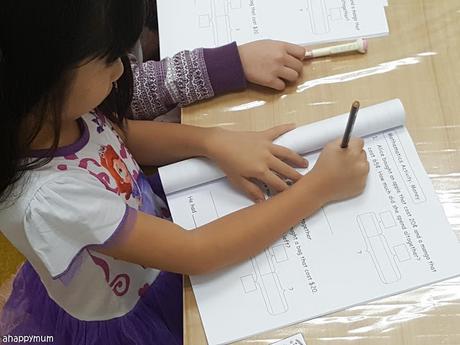
Angel trying her best to solve the problem sums on her own within the given time limit. It forces you to think fast, be analytical and work efficiently when it comes to solving problems
4) Self-confidence
The fact that Heguru gives them the opportunity to excel and achieve what they thought they previously could not is a formula for boosting their self confidence. I like how the activities comprise of a wide range, including numeracy, language, puzzles and general knowledge, giving the students the opportunities to discover themselves, to learn more about their talents and allow their potential to be unleashed. From two girls who were rather unsure about themselves and their abilities when they go for lessons, they now walked into the classroom with a spring in their steps knowing that they are ready for any challenge that gets thrown into their way. The fact that they have same age peers in class and that the Heguru teachers are always so approachable and friendly make it easy for them to settle into the routine and have fun while learning too.
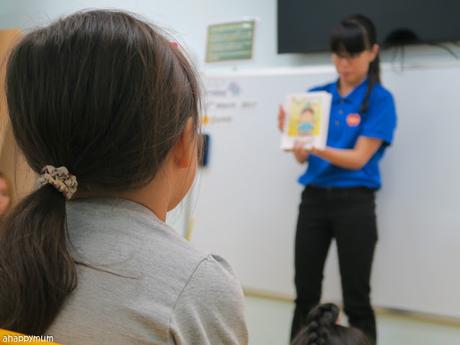
From someone who is scared to raise her hand or say out the answers in class, she now does it with poise and confidence
So, I'm thankful to share that we will be continuing our learning journey with Heguru and will be bringing you new updates along the way. I'm definitely interested to see how much more the girls can benefit from this experience and guess what? The baby boy has also embarked on his right brain training journey and I can't wait to see how that pans out for him!
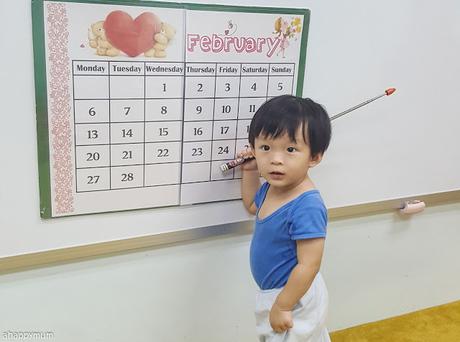
What? You mean I get to go to class now and don't have to stay outside to wait for my sisters? Yippee! I'll tell you how it goes in a few months. Wish me luck!
If you have any questions on right brain training, feel free to talk to the Heguru staff or give me a buzz anytime too. Till the next post!Heguru Education Centre outlets are located at Waterway Point, One KM, Tampines and Sengkang. To find out more about the courses offered and read up on right brain training, visit www.hegurueducation.com.sg or their Facebook page.
Disclosure: We were invited by Heguru Education Centre to review their courses and the girls attended complimentary lessons in return. All photographs and opinions are our own.

